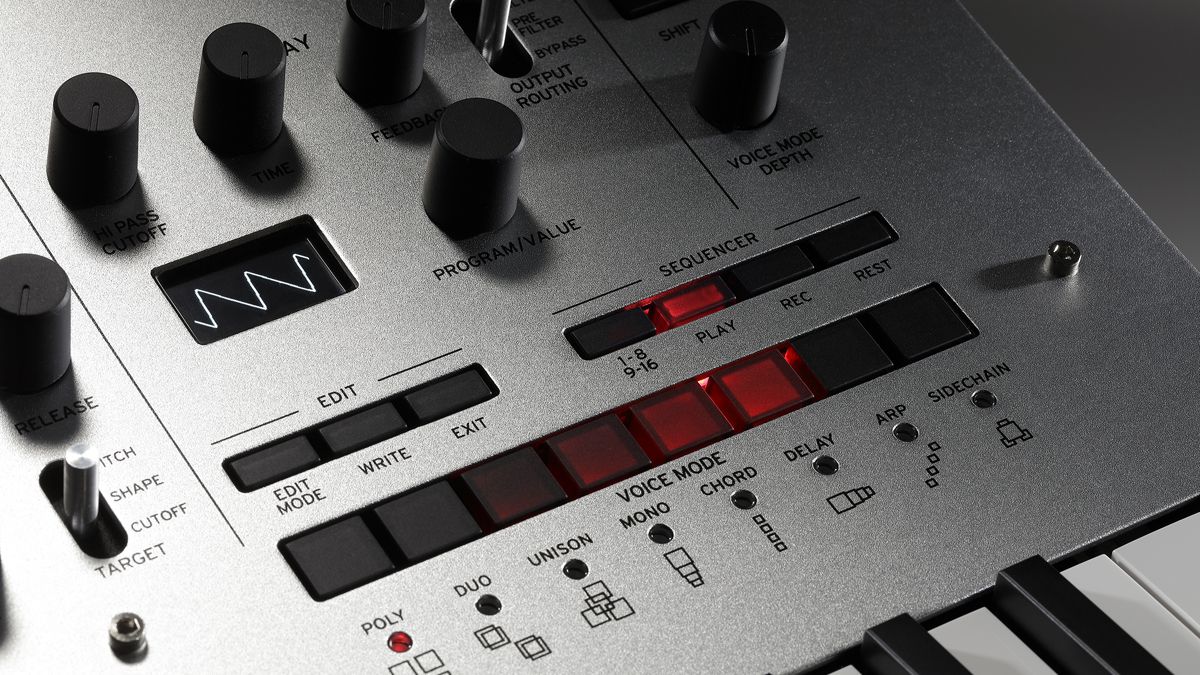How to use synths for creative sound design
Learn the ropes of synthesis and there's no limit to the sonic colours you can introduce to your music

The sampler is your go-to tool for designing sounds using audio files, of course, but the synthesiser is arguably even more powerful, as it enables you to create almost any sound in your head, entirely from scratch. Due to the huge number of presets supplied with synths these days, you might never need to delve into synthesis – but by learning how to create your own patches, you’ll develop your sonic identity as a producer and fill your tracks with sounds that are 100% yours.
Whether you’re a music production veteran or a synthesis noob, the first thing you should do with a new synthesiser is initialise it, then build a few bread-and-butter patches from the ground up. Not only will this train your sound-design muscles in general, but it'll also help you to understand how that particular synth works - you’ll quickly identify its idiosyncrasies in comparison to its peers.
Simple solutions
When making synth patches, it’s tempting to create sounds in isolation, but this won’t give you a feel for how the patch will work in an actual piece of music, often resulting in overly frequency-rich tones. For this reason, it’s a good idea to lay down a basic drum beat, then craft your patches in context - perhaps build up each synthesised track element from scratch (bass, stabs, chords, pads, etc), then save each patch once you’re happy with how it all works together.
A great way to sharpen your synth programming skills is to recreate iconic or interesting sounds from commercial tracks that you like. Aside from exploring new genres and sounds, deconstructing other producers’ patches will help solidify specific synthesis techniques which you can then add to your own bag of tricks. Someone online - be it on YouTube, Reddit or a forum - might have outlined how to do it, so you can gather some knowledge before diving in with a suitable synth.
As most synths are jam-packed with oscillators, features and effects, it can be tempting to think you have to get every section involved. Often, though, the most compelling patches are devilishly simple. Rather than feeling like you have to turn on every section, challenge yourself to craft cool sounds using the minimum amount of features.
Another great way to push your synthesis abilities is to design a multi-element patch that could, in theory, form the basis of an entire track. For example, if your synth has a self-oscillating filter, sequence sharp downwards filter sweeps to create a punchy kick; use a synced LFO to program a noise-based hi-hat; and place a stabby synth ‘snare’ on beats 2 and 4 of the bar. You get the idea!
Tweakability
Designing a synth patch can be likened to building a house of cards: one wrong move and the entire sound falls apart! Every small tweak makes a significant difference to the overall patch, and this is especially true with FM synthesis, due to the complex interactions of operators. This is why you should save your preset as soon as you’re happy with it, even if you’re planning to continue with your tweaking.
Get the MusicRadar Newsletter
Want all the hottest music and gear news, reviews, deals, features and more, direct to your inbox? Sign up here.
Your synth’s filter plays a huge part in a patch’s overall timbre, and will usually have some kind of impact on the sound even with the cutoff fully open. For this reason, you should always try out different filter types as you design a sound. If your synth has two or more filters, you should also play around with various serial and parallel configurations.
LFO modulation is one of the easiest ways to inject movement into a static synth patch. This doesn’t have to manifest as overt wobbling, either - often, an extremely subtle amount of modulation can dial in that near-imperceptible effect you need.
Going further with synth modulation, try altering the rate of one LFO with another LFO or other modulator. This speed-shifting control signal will add a sense of randomness and evolution that will keep things like filter sweeps and pitch drifting interesting over time.
For more sound design advice, pick up the February 2019 edition of Future Music.
Future Music is the number one magazine for today's producers. Packed with technique and technology we'll help you make great new music. All-access artist interviews, in-depth gear reviews, essential production tutorials and much more. Every marvellous monthly edition features reliable reviews of the latest and greatest hardware and software technology and techniques, unparalleled advice, in-depth interviews, sensational free samples and so much more to improve the experience and outcome of your music-making.

"If I wasn't recording albums every month, multiple albums, and I wasn't playing on everyone's songs, I wouldn't need any of this”: Travis Barker reveals his production tricks and gear in a new studio tour

“My management and agent have always tried to cover my back on the road”: Neil Young just axed premium gig tickets following advice from The Cure’s Robert Smith











